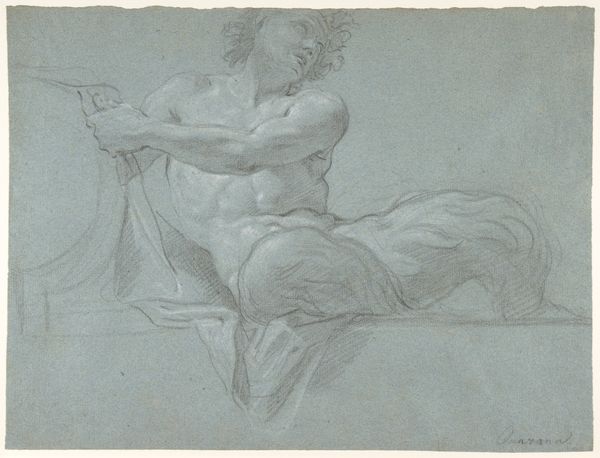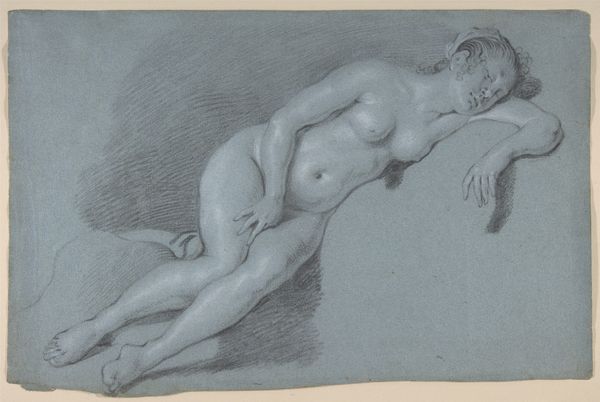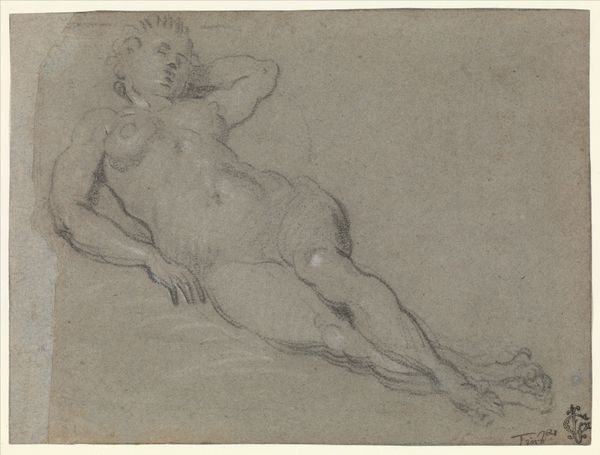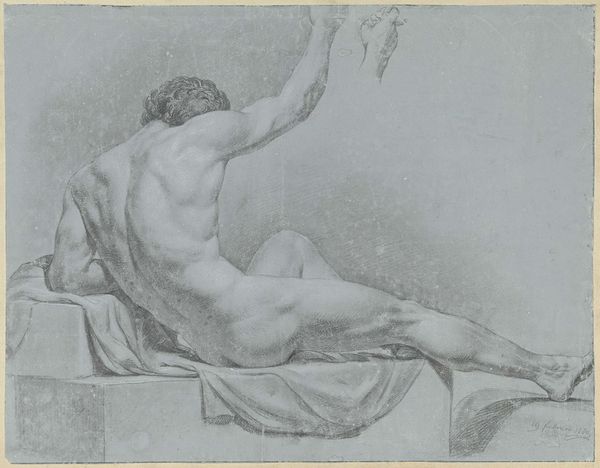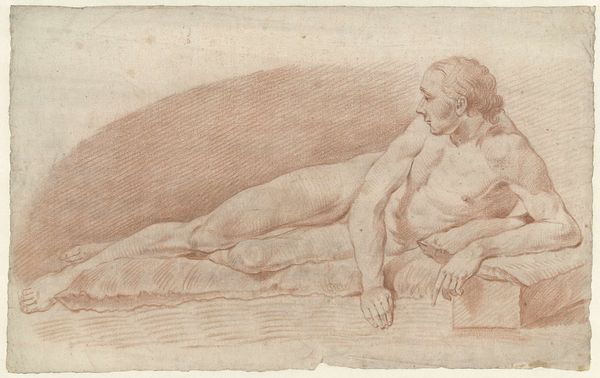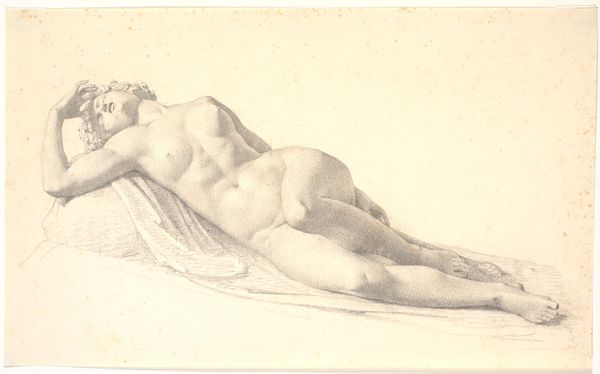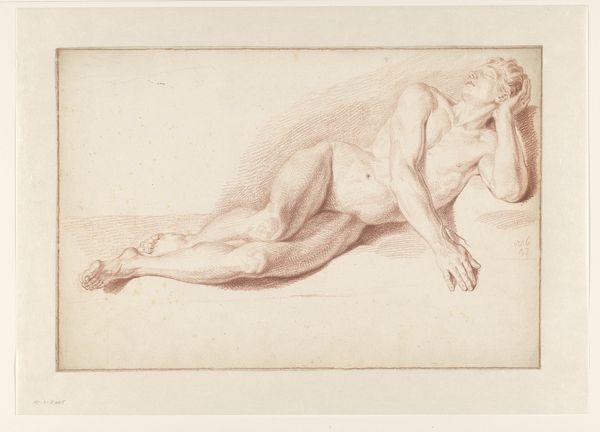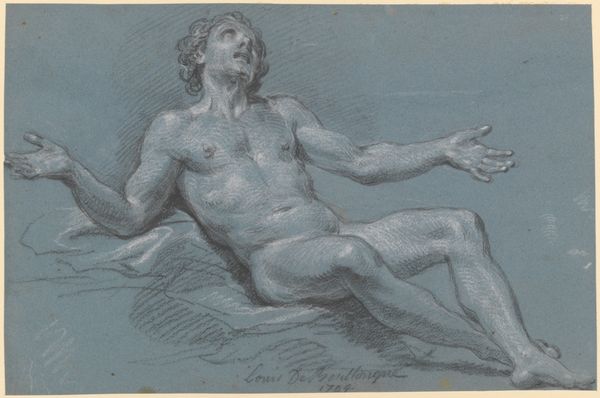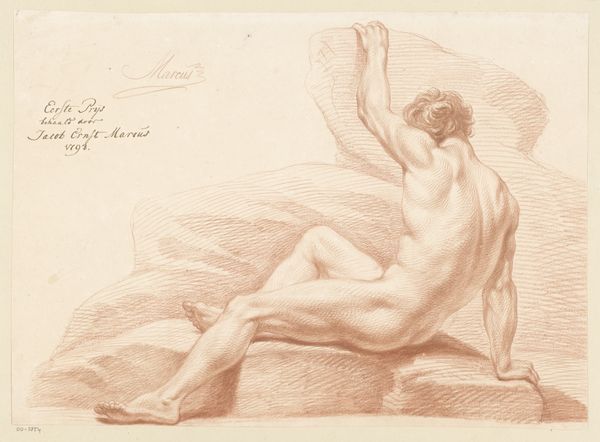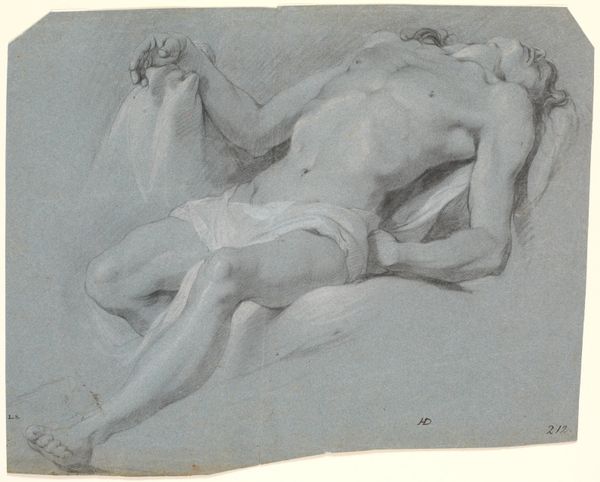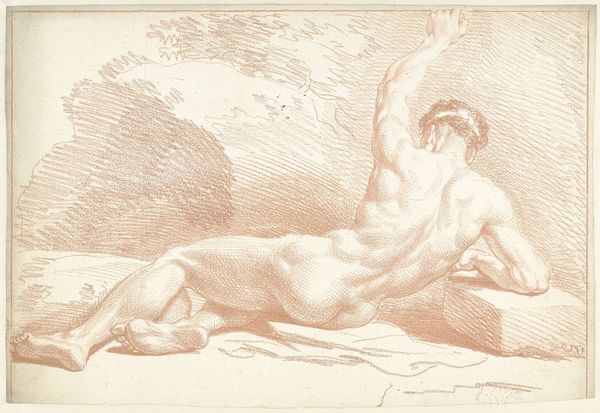
drawing, print, dry-media, pencil
#
pencil drawn
#
drawing
#
baroque
# print
#
pencil sketch
#
figuration
#
dry-media
#
pencil drawing
#
pencil
#
academic-art
#
nude
#
male-nude
Dimensions: 12 15/16 x 20 9/16 in. (32.9 x 52.2 cm)
Copyright: Public Domain
Curator: Look at this study, Reclining River God, a pencil drawing from the early 18th century by Louis de Boullogne the Younger. Editor: My first thought is one of languid power. There’s a compelling softness despite the implied musculature, a real contrast. Curator: Yes, that contrast reflects Boullogne's engagement with Baroque ideals of powerful idealized bodies within the very rigid and restrictive Academic system of art in France at the time. This is interesting when you look at power, and who gets to take up space – particularly as it relates to class. It reminds me a little of some of the contemporary debates around representation. Editor: Absolutely. River gods are always symbols of place, of generative power. But notice how the wreath encircles the figure's head. Its an enduring emblem – a reference to classical victory, yes, but also a motif signifying nature’s abundance and, ultimately, its cyclical regeneration. I also notice that he is partially covered, is this in reference to drapery, and further civilization? Curator: I think that it’s difficult to disentangle his classical allusions from very real, entrenched, class hierarchies. And while those academic structures promoted this kind of art, it was also often used for direct political and cultural propaganda by the ruling classes. Even here, in what seems a simple study. Who are the viewers, who were his patrons, and what are their views about their place in the world? Editor: A fair point. Perhaps its role isn't so passive. There’s always a dance between artists and patrons. Consider the visual echo: the curves of the wreath find themselves mirrored in the sweep of the body, in the drape of fabric that encircles him, creating a harmonic composition that speaks not only to power, but to its aesthetic underpinnings. Curator: I agree that it invites closer looking into the meanings ascribed to these mythic, and ultimately exclusionary, figure. The composition does that work for sure. Editor: It makes me ponder the longevity of certain symbols and archetypes – how they morph across eras, still echoing core truths about humanity's relationship with its world. Curator: And I am reminded that we, the viewers, must constantly work to challenge historical, social and political assumptions, if we are ever to see more equitably.
Comments
No comments
Be the first to comment and join the conversation on the ultimate creative platform.
